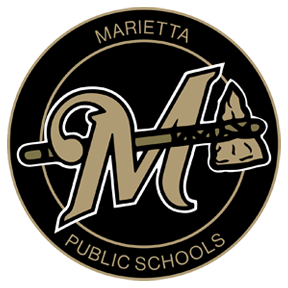Wasting no time after the beginning of the school year, students in Chris Dobbins’s STEM classes began their year by jumping right into the engineering design process. Less than two weeks in, they’re already working on their first prototype, a foot brace for children with cerebral palsy.
“The great part of the ‘Project Lead the Way’ software is that it is built around real-world problems,” said Dobbins. “Students learn to solve those problems by following the steps in the engineering design process.”
The first step in the process is to define the problem. Last week, Dobbins told students about children who have cerebral palsy, specifically Spastic Hemiplegia. Children with this condition have extremely stiff muscles in the back of the affected leg that prevent them from being able to walk with their feet flat on the ground. As a result, they usually walk on their toes, which creates other physical issues.
STEM class students were assigned to design, build, and test an ankle boot for use by those suffering from Spastic Hemiplegia. They had to generate concepts and design a solution (steps two and three) using materials supplied by Dobbins. Basic supplies include foam pads, wooden popsicle sticks, cardboard, Velcro and elastic.
Dobbins gave the students set criteria that the boot must meet including details about movement and support. Students also had to consider comfort and pressure points, which could create wounds if not successfully addressed. Lastly, the boot must be easy to put on and remove.
Students worked in teams to submit designs, then they moved on to step four, building their prototype. As students worked together on the project, Dobbins moved from station to station, occasionally reminding them to check their criteria.
“It’s a way to keep them on task,” he said, “but also it helps them find and correct their own mistakes without me pointing them out – it’s a better way for them to learn.”
Their prototypes finished, students moved to steps five and six – evaluate and present the solution.
“Working this way helps students gain an understanding of the process,” said Dobbins. “They need that so that they can break it down and apply it to other projects.”
Students will continue to use the engineering design process on undertakings throughout the year.
“Our students are fortunate to have a teacher and facilitator like Mr. Dobbins,” said Superintendent Brandi Naylor, “and our school is pleased to be able to provide students these STEM classes in our new, well-equipped facility.”

